Life and work
Michael Gitlin's family emigrated from South Africa to Israel in 1948. Gitlin received his BA in English Literature and Art History from the Hebrew University of Jerusalem (1967). He simultaneously studied at the Bezalel Academy of Arts and Design in Jerusalem, graduating in 1967. Gitlin moved to New York City in 1970 and received an MFA from Pratt Institute (1972). His first museum show was at the Israel Museum in Jerusalem in 1977. That same year, his work was exhibited at the Documenta in Kassel, Germany. Gitlin was represented by the Schmela Gallery in Düsseldorf and works of his were acquired by such institutions as the Stedelijk Museum in Amsterdam and the Gugghenheim Museum in New York. In the 1980s, Gitlin taught sculpture at the Parsons School of Design and Columbia University in New York, the Bezalel Academy of Art in Jerusalem, and the University of California in Davis.
Gitlin's one-person museum shows have included: the Israel Museum, Jerusalem (1977); the ICC Antwerp (1980); Exit Art, New York (1985); Kunstraum Munchen (1986); Bonn Kunstverein (1988); Kunsthalle Mannheim (1989); Carnegie Mellon Art Gallery (1989); Museum van Hedendaagse Kunst Antwerpen (1991). Gitlin is a member of the generation of Post-Minimalist artists working in Manhattan and Europe in the early 1970s that included Gordon Matta-Clark, Benni Efrat, Joel Shapiro, Joshua Neustein, Robert Grosvenor, Nahum Tevet, and Ulrich Rückriem, among others.
Gitlin's work can be characterized as abstract and reductive. He began his career working three-dimensionally, first with paper and later with wood, using paper as a medium rather than a support. His sculptures are mostly wall pieces, which depend on architecture for their physical and contextual support. In a 1996 catalogue for a show at Katrin Rabus Gallery in Bremen, Germany, Barry Schwabsky describes Gitlin's work as "characterized above all by its restlessness [...]. The object in crisis – for Gitlin at least, and perhaps only for him, such is the risk of the artist – implicates the subject of sculpture more than its means. For the sculptor, there is the object and there is the space it inhabits, and these must have a determinate relationship. This relationship is perhaps the true subject of the work."
In recent years, Gitlin has worked with steel wool, copper wire, foam, and black spandex. Drawing too has always been a demanding part of Gitlin's project.
Selected Museum Collections
British Museum, London
Brooklyn Museum, New York
Detroit Institute of Arts, Detroit
Fogg Museum, Harvard University, Cambridge
Solomon R. Guggenheim Museum , New York
Haifa Museum of Modern Art, Haifa, Israel
Hirshhorn Museum and Sculpture Garden, Washington D.C.
Leopold Hoesch Museum, Duren, Germany
Israel Museum, Jerusalem, Israel
Jewish Museum, New York
Kaiser Wilhelm Museum, Krefeld, Germany
Kunstverein Ingolstadt, Ingolstadt, Germany
Museum Ludwig, Cologne, Germany
Kunsthalle Mannheim, Mannheim, Germany
Marl Sculpture Museum, Marl, Germany
MUSMA, Museum of Contemporary Sculpture, Matera, Italy
Neues Museum Weserburg, Bremen, Germany
MOMA Museum of Modern Art, New York/>
New York Public Library, New York
Rijksmuseum, Amsterdam, Netherlands
Kröller-Müller Museum, Otterlo, Netherlands
Städtische Galerie im Lenbachhaus, Munich, Germany
Städtische Galerie, Erlangen, Germany
Stedelijk Museum, Amsterdam, Netherlands
Tel Aviv Museum of Art, Tel Aviv, Israel
Wilhelm-Hack- Museum, Ludwigshafen, Germany
Wilhelm-Lehmbruck-Museum, Duisburg, Germany
James Lee Byars was an American conceptual artist and performance artist specializing in installations and sculptures, as well as a self-considered mystic. He was best known for his use of personal esoteric motifs, and his creative persona that has been described as 'half dandified trickster and half minimalist seer'.
Michael Buthe was a German artist who lived and worked between Germany and Morocco. He exhibited widely throughout Europe during his life and is known for his eclectic and prolific oeuvre which encompasses painting, sculpture, and installation.
Lawrence "Larry" Zox was an American painter and printmaker who is classified as an Abstract expressionist, Color Field painter and a Lyrical Abstractionist, although he did not readily use those categories for his work.
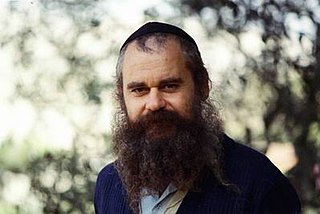
Shaul Shats is an Israeli painter, printmaker and illustrator, born in 1944 in Kibbutz Sarid, Israel. He studied at the Bezalel Academy of Art and Design, Jerusalem (1965–66), the Rietveld Academy, Amsterdam (1967), and the Freie Akademie, The Hague (1967). Shats taught at the Bezalel Academy from 1978–82. He won the Israel Museum Prize for Illustration (1990), the Jerusalem Prize (1992), the Ben Yitzhak Prize for Illustration of Israeli Children's Books (1992), and the Ish-Shalom Prize.
Imants Tillers, is an Australian artist, curator and writer. He lives and works in Cooma, New South Wales.
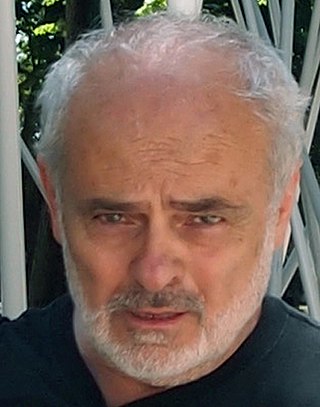
Joshua Neustein is a contemporary visual artist who lives and works in New York City. He is known for his Conceptual Art, environmental installations, Land Art, Postminimalist torn paper works, epistemic abstraction, deconstructed canvas works, and large-scale map paintings.

Pat Steir is an American painter and printmaker. Her early work was loosely associated with conceptual art and minimalism, however, she is best known for her abstract dripped, splashed and poured "Waterfall" paintings, which she started in the 1980s, and for her later site-specific wall drawings.

Adja Yunkers (1900–1983) was an American abstract painter and printmaker. He was born in Riga, Governorate of Livonia, Russian Empire in 1900. He studied art in Leningrad, Berlin, Paris, and London. He lived in Paris for 14 years, and then moved to Stockholm in 1939. In Stockholm, he published and edited the arts magazines ARS magazine and Creation magazine. In 1947 he moved to the United States, where he lived for the rest of his life. He held a teaching position at the New School for Social Research in New York while summers were spent teaching at the University of New Mexico. In 1949, he received a Guggenheim Fellowship. During the 1950s he primarily worked in color woodcuts, introducing brushwork into the genre. In 1960, he began producing lithographs. He produced two important series of lithographs at the Tamarind Lithography Workshop in Los Angeles―Salt and Skies of Venice. Yunkers died in New York City in 1983.
Paul Thek was an American painter, sculptor and installation artist. Thek was active in both the United States and Europe, exhibiting several installations and sculptural works over the course of his life. Posthumously, he has been widely exhibited throughout the United States and Europe, and his work is held in numerous collections including the Hirshhorn Museum and Sculpture Garden in Washington, DC, the Centre Georges Pompidou, Paris, and Kolumba, the Art Museum of the Archdiocese of Cologne.
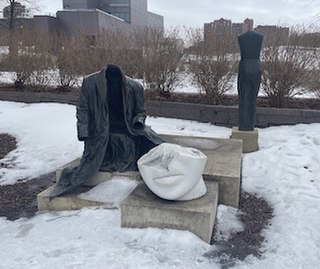
Judith Shea is an American sculptor and artist, born in Philadelphia, Pennsylvania, in 1948. She received a degree in fashion design at Parsons School of Design in 1969 and a BFA in 1975. This dual education formed the basis for her figure based works. Her career has three distinct phases: The use of cloth and clothing forms from 1974 to 1981; Hollow cast metal clothng-figure forms from 1982 until 1991; and carved full-figure statues made of wood, cloth, clay, foam and hair beginning in 1990 to present.
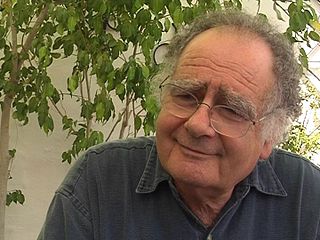
Micha Ullman is an Israeli sculptor and professor of art.
Haim Steinbach is an Israeli-American artist, based in New York City. His work consists of arrangements of everyday objects, presented in “Displays” and shelves of his own making.
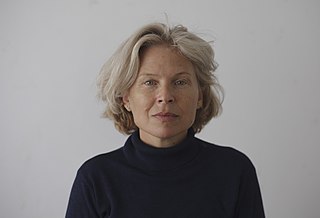
Sigalit Ethel Landau is an Israeli sculptor, video and installation artist.

Nigel Hall is an English sculptor and a draughtsman.

Zvi Goldstein is an Israeli visual artist living in Jerusalem.
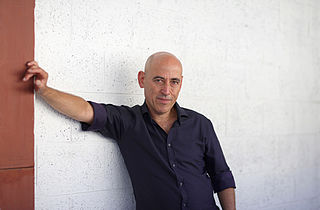
Nahum Tevet is one of the leading Israeli artists whose work was among the earliest to respond to the minimalist canon by introducing into his installations everyday domestic objects, metaphors and images like in: Corner (1973-4) and Arrangements of Six Units.

Nira Pereg is an Israeli artist. She spent the 90s in New-York, where she received her BFA from Cooper Union at NYC. On her return to Israel, she graduated from the Bezalel MFA studio program in Jerusalem, and has been teaching internationally ever since.
Nairy Baghramian is an Iranian-born German visual artist. Since 1984, she has lived and worked in Berlin.
Michael Druks was an Israeli-born British artist.
Will Insley was an American painter, architect, and planner of utopian urban models. As a painter of geometric abstraction, he is known for his large-area geometrical picture elements.












